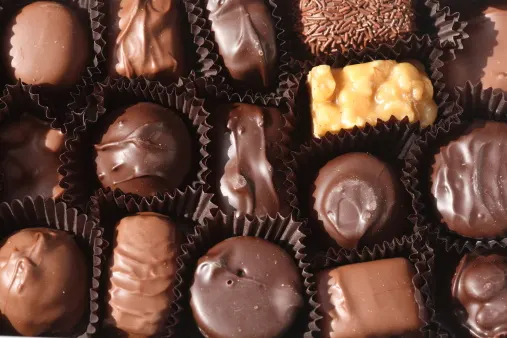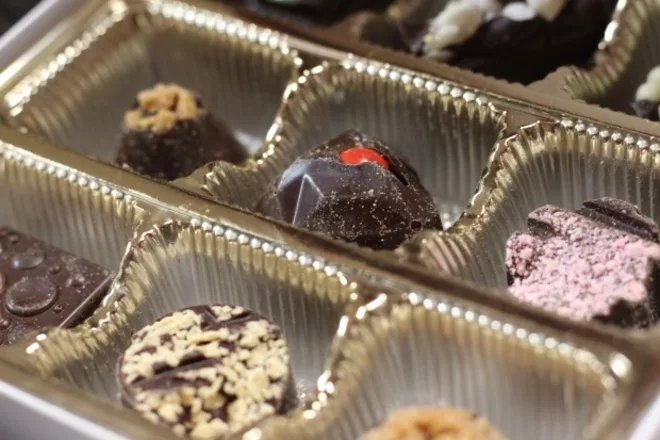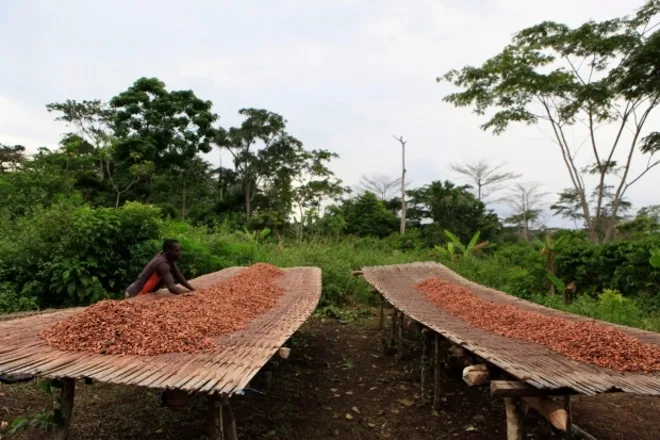
Your favourite treat has complex, mysterious supply chain
Sophia Carodenuto, an assistant professor of geography at UVic, is trying to unravel the tangled web of where chocolate comes from. She says part of the problem is the high number of players involved in taking chocolate from bean to box.
Related: Demand for chocolate contributes to deforestation

Chocolate passes through several different hands to take it from bean to box. (Kate Tennenhouse/CBC)
"There's actually quite an elaborate process that has to happen [to make chocolate]," Carodenuto said.
The main ingredient for chocolate, cocoa powder, comes from Africa.
The cocoa beans go through a long process of grinding, cleaning and being turned into powder or liquor. Then it's sent to chocolate hubs in Europe like Germany, the Netherlands or Switzerland where it's manufactured.
"You think that you're getting your chocolate from Amsterdam but it's actually coming from Ghana originally," she told Stephen Quinn, the host of CBC's The Early Edition.
COCOA FARMING AND DEFORESTATION
Most of the region where the cocoa beans grow in West Africa are undergoing rapid deforestation.
Up to 2.3-million hectares of forest have been lost in the West African cocoa belt, according to estimates used in Carodenuto's research.
In countries like Cote d'Ivoire and Ghana, one fourth of all forest lost is due to cocoa production as trees are cut down to make way for cocoa crops.

A farmer in the Côte d'Ivoire arranges drying cocoa beans as he prepares to cover them for the night. Consumers often don't know the true country of origin of their chocolate, says researcher Sophia Carodenuto. (Rebecca Blackwell/Associated Press)
Cocoa farming doesn't have to lead to deforestation, Carodenuto said. Some variations grow more productively under a canopy tree cover but farms are moving more towards full sun cocoa.
Even knowing the country of origin doesn't help much, Carodenuto added.
One of the most surprising results of her research was the lack of information about cocoa farms in West Africa. Right now, there is currently no publicly available map of roughly two million cocoa farmers and suppliers.
"It's very hard to link a specific batch of chocolate or cocoa to deforestation or the lack of deforestation because we don't know where exactly they are farming," she said.
"The first steps [to sustainable chocolate] is having supply chain traceability," Carodenuto said.
That's not just limited to the farmers though.
"We need to try to address the large brand names so that the average consumer can then be able to know where's their chocolate coming from," she said.
This article was originally posted on CBC.ca by Clare Hennig.











